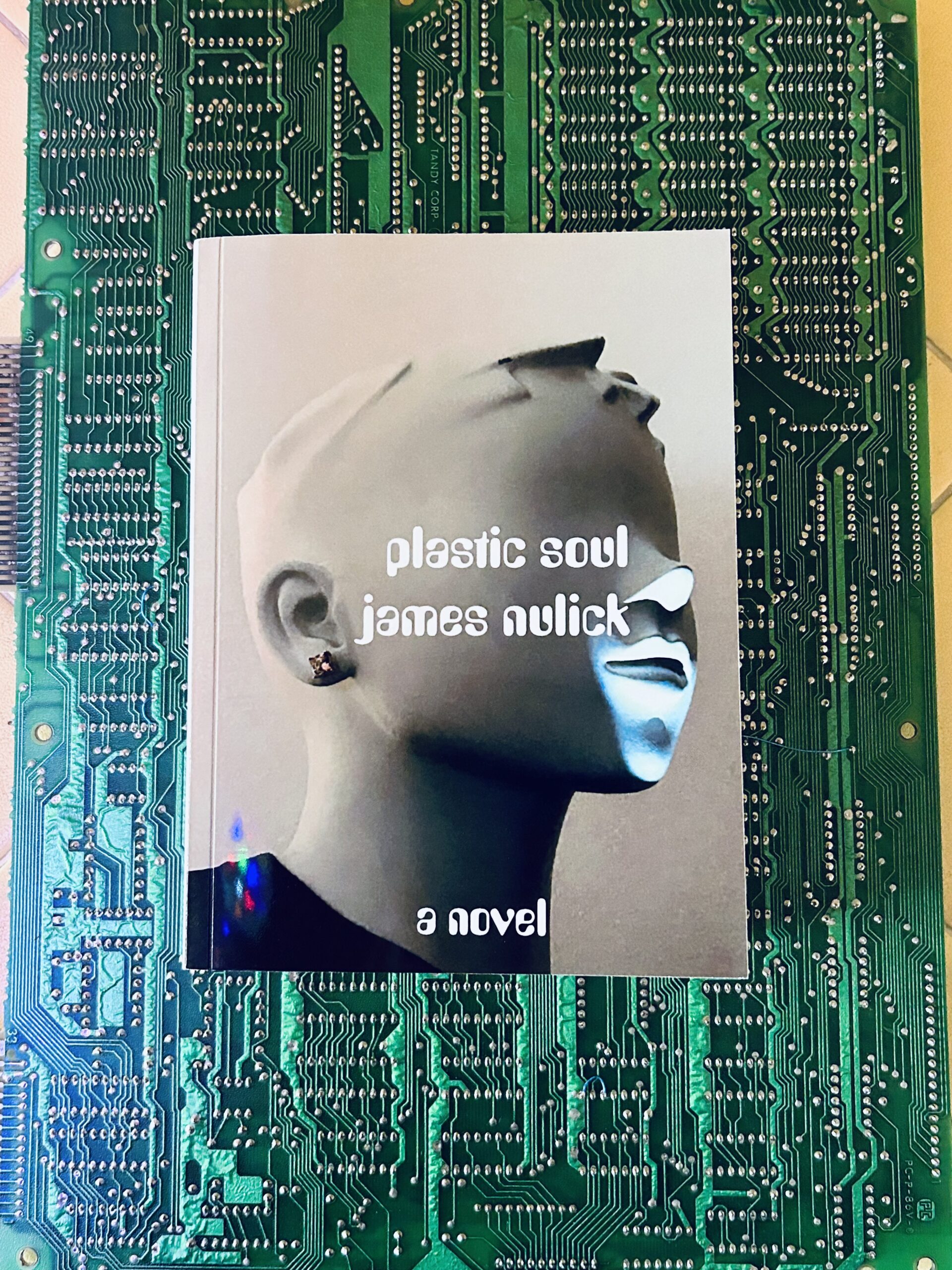
‘The year is 2043. Wealthy elites are paying vast sums to have clones made of themselves, and Chrysalis Institute is happy to meet the demand.
‘But if a companion isn’t what you seek, the Institute offers other boutique services to help the old look young again, for a price…
‘Propelled by James Nulick’s lyrically innovative approach to slipstream fiction, Plastic Soul presents an incisive yet darkly comic vision of an irreversibly digitized future in which meaning has been traded for vanity. It is a future not far adrift from the world we presently inhabit—a future that haunts our present.‘ — Publication Studio
‘The ideal career path for a novelist goes as follows: The first three decades of life are spent studying. During the fourth and fifth decades, the novelist publishes four novels which some associates consider to be ‘masterful.’ Then, just as the work begins to draw international attention, the novelist drives a speeding vehicle into oncoming traffic and dies.
‘The model for this ideal novel writing career is W.G. Sebald. And despite whatever opinions you may have or may want to have about Sebald’s novels, I think there is an important lesson here for novelists of my generation and every generation for the foreseeable future. Novels exist in a unique timeline separate from all other media. There is no meaningful correlation to novel writing mastery and hype cycles, end-of-year lists, or even an author’s life. There is no history that suggests rushing to publish (shitty) writing on the (repugnant) internet—or with whatever putrid automated publishing service—will one day cause others to perceive your novel writing as so-called masterful.
‘James Nulick, age fifty-four, seems to be quietly amassing a career where he publishes four masterful novels. I am counting three novels so far: Plastic Soul (released this past October), The Moon Down to Earth (2019), and Valencia (2016). Consistency counts for a lot. There is a unique and recognizable style evident across the two most recent novels and a handful of short stories. With Plastic Soul, Nulick asserts himself as a brand we can trust. Novelists should not be trusted unless they have a strong, consistent style. Many young novelists attempt to publish before they have a strong, consistent style and then wither and die. A young person withering and dying is not something I want to invest my readerly attention in. Even if in the end this type of young, inconsistent novelist goes on to join the pantheon of masterly novelists with an unmistakable strong, consistent style, someone like me may still come along at some later date and end up resenting that novelist after having read an early uncharacteristic novel published before the novelist really had any novel thing about them. There are many examples of inconsistent novels in the 20th century but for novels written back in those days, we must make some allowances. Back when the economy of novel writing was a much different thing than it is today. Back before all the labor had been automated out of publishing novels, replaced by software. Back when Faulkner was falling off his stool in Hollywood, and the up-and-coming pantheon of boomer novelists were just beginning to experiment with their fresh take on whatever the heck could come after modernism. Back before we had a seemingly endless number of novels to choose from at any given moment. Back when there were hungry families who were financially dependent upon the printers, and the typesetters, and the copyboys, and the designers, and the editors, and the ad men, and the distributors, and the shopkeepers, and so on, who were all involved in producing and selling a constant stream of novels to satisfy the reading public, whether those novels be consistent to a one-of-a-kind style or not. Because back in those days, people did not have some idiot machine that could spit out a terrible, yet amusing little movie rendition of every harebrained idea for a novel any nitwit typed into a text box to entertain himself on winter evenings. Back in those days, people needed novels to blanket the void in their souls that was exposed by silence. Silence that no longer exists. Back then, there was an economy around novel writing that supported inconsistent novels. Today, however, there is very little reason to publish an uncharacteristic, inconsistent novel, so I must demand consistency from even my young novelists. I must say, no, I will not read your novel until you prove yourself of strong novel writing characteristics that I can rely on! So thank the heavens for Nulick. Thank the heavens that after Plastic Soul, I am confident I can return to Nulick expecting a certain readerly experience. A readerly experience that I will only expect to evolve in a way that Nulick alone could make it evolve. Thank the heavens there is a novelist who I can trust in Nulick! Consistency counts for a lot, but consistency is the easy part. There also must be some readerly thing that compels a return within that consistent style. Something that gives rise to a compulsion that can usurp the desire to cover up the big gaping hole in your soul with a phone.’ –– Forrest Muelrath
PUBLICATION STUDIO
PAGES: 491
DIMENSIONS: 4.5″ × 6.75″ × 1″
IMPRINT: The Fellow Travelers Series
The author has also prepared a special Artist’s Edition of the book, with Patrick Kiley of PS Hudson.
Deluxe special edition link:
https://publicationstudio.biz/books/plastic-sould-artists-edition-preorder/
Regular edition:
https://publicationstudio.biz/books/plastic-soul/
James Nulick @ instagram
James Nulick @ goodreads
Sample:
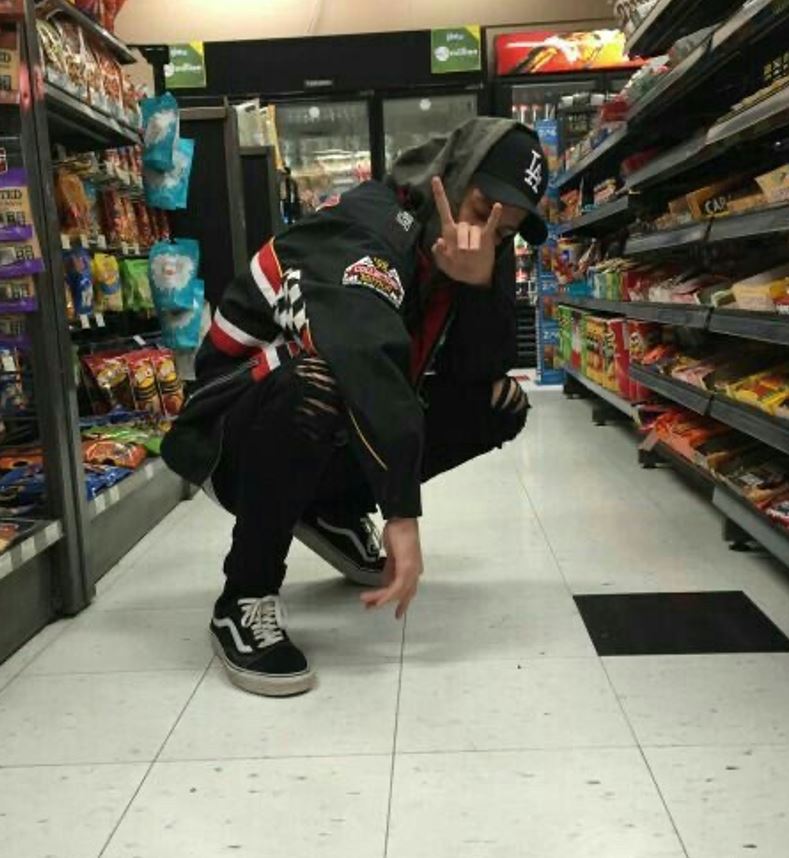
Saturday afternoon, 7-Eleven
Saturday afternoon, me and Fernie ride our bikes to 7-Eleven, a five-minute ride from his house. Fernie opens the door ahead of me, his inevitable ding dong in perfect time with the door chime, ding dong Mr. 7-Eleven clerk, Fernie says to the clerk, chin bumping a friendly greeting to him, the clerk clutching his chest in mock heart attack, Uhh Ohh, it’s the Smothers Brothers. We stock up on the essentials… Doritos, Cheetos, and Donettes, things Mother would never allow me to eat, gathering supplies for a weekend of serious nesting. Hey bro, let me take a pic of you. Alright but no autographs, please. I take a pic of Fernie with my handheld, waxing the floor with his Vans, like a professional, his kneecaps exposed in his sliced up RVCA Daggers. You get the pic? Yeah, looks good. I turn the handheld in his direction. Don’t be choking your poultry to that pic. You’re dumb. Once we’re fully stocked, we head out the door, our plastic bags bulging like a couple of sugar high bank robbers. ding dong have a nice day Mr. 7-Eleven clerk, Fernie says, waving goodbye. Hey bro, did you see the clerk? He’s looking at us like these kids are total stoners. Oh god, is it that obvious? Fernie says, clutching his crucifix necklace in mock horror. Please don’t tell my mommy, I say, giggling. He’s cool—he’s just jelly because he’s working on a Saturday, Fernie says. He wishes he was us, he wants to be us, man! Yeah, no doubt! It would totally suck to work on a Saturday. He thinks we’re brothers. Well, ain’t we? Back on the slab in front of the store entrance, we turn our bikes over in tandem, a perfectly choreographed machine. I defer to Fernie, letting him lead, as he always does. We weave between cars parked on the street, getting super close but not enough for pinstripes. I nearly crash into a prehistoric old man getting out of a black BMW. Hey, watch it you punks, me and Fernie cracking up. We pass the shuttered movie theatre where we watched the movie about being thirteen when we were both thirteen, so long ago. Zigzagging between ticking beasts, my reflection perfect in the dusty shop glass window of PRELOVED FABRIC, long out of business. I wonder what that bitch is doing now, Fernie says, looking back at me, laughing. Probably blowing her fat gay boyfriend. You know it! A quick swoop to the left on Ashland, riding side by side, our path wide as a city bus, the pharmacy on our right, the stately funeral home on our left, looking more like an Ethan Allen furniture gallery than a place where the dead are prepped for eternity. That place creeps me out, Fernie says, glancing back at me, the businesses quickly fading into row houses that extend for several blocks, people stacked on top of each other like pigeons in expensive coops, a canopy of ancient trees on either side of the street keeping most of the sun off our liquid necks, sweat blooming on the small of my back, my armpits. Fernie blows through the stoplight—red—at the intersection of Ashland and Kessen Avenue. You’re crazy, man! I yell at him, following him anyway, obedient as Cinnamon, Fernie laughing, hovering over his bike, a street magician on two wheels. I’m adrift in the slipstream of his RVCA Daggers, black fabric perfectly accentuating my illicit thoughts. I could get lost in him for hours.
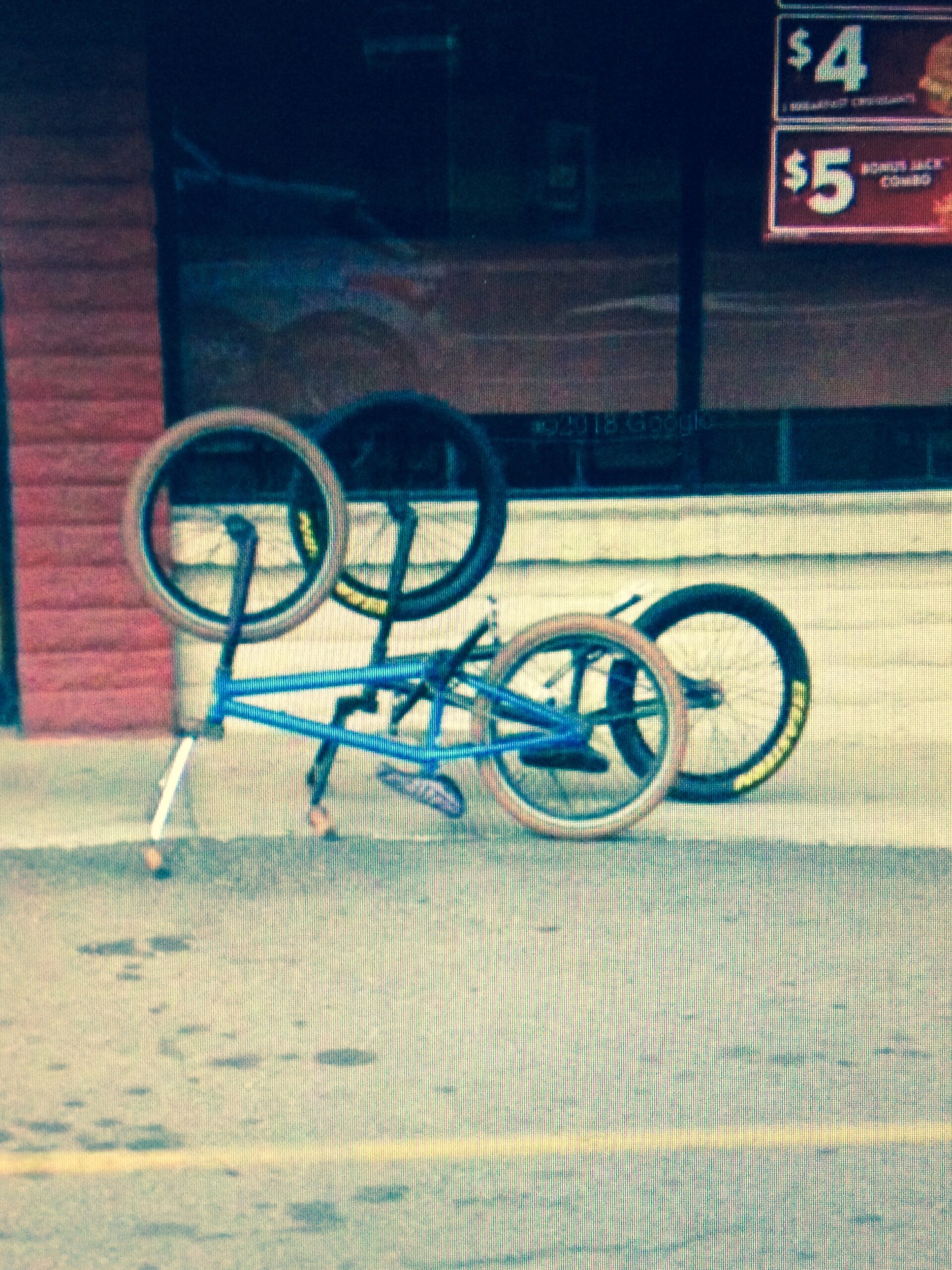
Saturday night, Fernie’s bedroom, Mario Kart 8.
Saturday night, Fernie’s bedroom, Mario Kart 8. My Subrosa Malum turned upside down on the patch of wood flooring not covered by the rug, Fernie’s Subrosa Salvador turned over next to mine. In a corner, on a stand, a Kurzweil synthesizer. 88 keys, baby, Fernie says, each time I enter his bedroom. Fernie’s parents are a lot like mine, mostly absent, treating their children more like expensive accessories than children. His father is an engineer of some kind, his mother doesn’t work, not outside, anyway. I was always a bit confused as to why my father and Fernie’s never became friends, as they are both engineers, and live two hundred feet from each other. Once, while in Father’s office, which was more like a beautiful library with a drafting table in it, a large custom-made desk next to the drafting table, the top of it a Seventeenth Century door from Seville, Spain, topped with beveled glass thick as my pinkie. I may have been fifteen or sixteen, when I felt bold enough, while standing next to Father at his drafting table, to ask why he and Fernie’s father weren’t friends. Aren’t you both engineers, Father? Yes, I believe Fernando’s father is an engineer, son, though his field is aerospace, I work in defense plastics. I really don’t have time for friends, I’m on an on-call basis, I must be ready to leave at a moment’s notice—you know all this. And sometimes, son, it isn’t good to mix with others of your own kind, it tends to… ghettoize you, you might say. I want to be known for my work, not my associates. Do you understand?

Too young for her
I still don’t get why you and Nicole never hit it off. Imagine if you two got married or something, that would be kinda weird but kinda cool, you’d be my bro in law. Bro, I’m too young for her, but it’s not like I didn’t want to. Remember that time Nicole was on the varsity volleyball team, she was like seventeen or something? We were freshmen. We were sitting on the bleachers, and I was totally tenting a chubby watching her, I think your mom was right there with us. I was trying to think of stuff so it would go away. I remember you once told me to think about sharks attacking people or something to make a chubby go away but it was totally not working, and then Nicole fell on the floor, and I was like dayyum—I almost creamed my jeans right there. You probably went home and jerked off afterwards. Well, what else are you supposed to do? It’s morally wrong to waste a hard-on, bro. That’s true. I couldn’t stop thinking about her on the floor and it was so wrong because your mom was like right there. I don’t remember that. Oh, believe me, bro, I do.
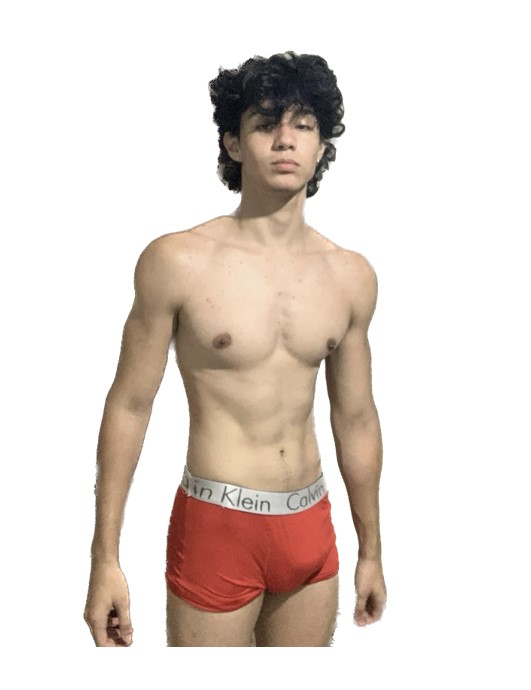
Tupperware Stuffables. More gazelle than boy. Enter the Dragon
We multiplayer Mario Kart 8 for a bit, but I’m quickly bored, my thoughts drifting uncomfortably to John Orrs’ bedroom, a saucer-eyed ten-year-old boy whose innocence disappeared inside someone’s mouth, and Grand Theft Auto holds no appeal… I want to do something that requires little movement, so I can be physically closer to Fernie, without him suspecting my true motives. Hey brother, we should watch a movie. Fernie had an old machine and tons of DVDs. What do you want to watch? I scan the black storage shelves bookending his flatscreen, my eyes landing on Enter the Dragon. Hey man, Bruce Lee! Let’s watch this! Good choice bro, I haven’t seen it for a while. Hold up, I’m gonna change into my peejays before we start watching it, Fernie says, opening the middle drawer of a five-drawer chest of drawers near his bed. He frisbees a clean T-shirt onto his bed, opening like a dark flower when it lands to reveal the Nirvana smiley face with the eyes exed out, the exact same T-shirt I have, the shirts we bought at the mall together when we were fifteen. Ahh man, if I had known you were gonna wear your Nirvana shirt, I would’ve worn mine, too. Nah, bro, no copycats. Fernie tosses a pair of dark green pajama bottoms onto the bedspread, magically landing next to the shirt. I should’ve been a first round NBA draft, he says, laughing, closing the drawer with his butt. He toes off his Vans like I do, his black socks kinda grubby. I guiltily recall spying on him a few weeks earlier. Without any fanfare he pulls his dirty shirt over his head, basketball tossing it into a hamper next to the chest of drawers, toe-walking his RVCA Daggers off in a comic strut until they’re bunched around his knees, bending slightly to work them over the knobs of his kneecaps, and suddenly he is standing before me, his back to me, wearing only black socks and black boxer briefs, his muscular cinnamon twist body more gazelle than boy. His RVCA Daggers gathered at his feet, he kicks them off, hurtling them across the floor, where they settle in the general vicinity of the clothes hamper. I am momentarily entranced by the treasure trail below his navel. Hey bro, are you gonna put on your peejays so we can watch the movie or what? You’re all looking at me like you wanna visit your favorite city in Vietnam, Phukabut. Embarrassed, walking sideways towards my backpack. Yeah, of course—but I thought Phukabut was your favorite city, homo. Bro, I got so many girls all over me I need to wear flypaper, Fernie says, busting over his own joke, and I realize I could be in his room with him forever and my life would be complete. You are smooth with the girls. Like baby powder, Fernie says, hopping on one foot to adjust a sock. All the girls want this monster dick, Fernie says, grabbing his crotch. I remove my Catholicized pajamas from my backpack, suddenly feeling childish, my pajamas not as exciting as Fernie’s green flannel bottoms and Nirvana T-shirt. Hey man, how long have you had those peejays, Fernie says, giggling. In all the time we’ve been friends, it’s never been in his nature to make fun of me, or criticize me for anything, though he does like to tease. A long time. I like them because they’re soft. That’s cool, bro—they have your mom written all over them. I quickly inventory his armpit hair as he’s pulling his shirt over his head. What’s so dumb is I have the same exact T-shirt at home, two hundred feet away, tucked into my Danish chest of drawers, the bureau Mother bought me after Nicole left for university. You need furniture suitable for a young man, not something passed down from your sister. I am beyond disappointed because we could’ve been matching, if it wasn’t for my stupid overcontrolling mother. I have another Nirvana T-shirt Fernie doesn’t have—Nicole bought me a freaky In Utero shirt for my sixteenth birthday, the one with the see-through anatomical model on the front, I remember it because we were at the mall together and she bought it for me out of nowhere, it was such a surprise, I almost cried over it, just this weird uncontrollable sadness, but happy at the same time. We ate a slice of pizza from Pizza Belly after she bought me the shirt, sitting across from each other at the food court, my brand-new birthday Nirvana T-shirt in a shiny plastic bag tucked at my side, one of the last good memories I have of Nicole, right before she left for university. As my bones grew they did hurt, they hurt really bad. I tried hard to have a father, but instead I had a dad. Yeah, these peejays are totally my mom. Obs I wouldn’t have chosen them. Fernie pats my back in mock consolation. It’s ok brother, you’ll be outta fourth grade in no time. Once I’m dressed in my pajamas, my socks still on, Fernie loads Enter the Dragon into the player. He half-turns to glance at me. Hey bro, can you crack the window? I’ll love you forever. I walk to the window, thumb the latch—it’s locked—did he suspect someone at his window a few weeks back? And elbow the sash two inches. You can lounge in my beanie if you want, Fernie says, pointing to the huge grey sherpa bean bag chair in the middle of the room, and the gentle look in his eyes indicates this is the greatest gift a friend could give, the donation of sacred space. Fernie grabs a dirty bath towel from the hamper and rolls it into a smoke snake, then lays the smoke snake across the threshold, covering the gap between the floor and the door from end to end. Where you gonna sit? On the floor—better viewing area, it’s like you’re at the movies, Fernie says, laughing, minus the hot girl at the concession stand. How big is your screen? Seventy-seven inches. Damn. Mother would never let me have a screen that big. Yeah, but you have that beta Blip channel, don’t you? Doesn’t it come with its own special screen? Yeah, it does. How big is it? I don’t know, like forty-eight inches or something. Damn bro that’s like bathroom size. Do you get any good movies on it? You can get whatever you want. Even porn? Yeah, even porn, but my mom has this stupid antiporn filter on it. Damn, that sucks. I just use my handheld. Yeah, me too, I say, laughing. Where are you gonna sit? On the floor man, I already told you. You’re such a space cadet. Fernie shines his knucks on my hair—clank clank clank—is there anybody in there (laughing) I’ll sit there, too, moving next to him. You don’t want the beanie? Nah, I’m good. Fernie loads the DVD, rheos the lights, his waking his mushroom nightlight. In the trippy orange-blue darkness, Enter the Dragon begins. Fernie half leans against his bed, raising himself up using his knees as a wedge before completely unfurling across the mattress, wrestling with the hideaway roll top panel in his headboard, his fingers stalactites stretching to meet the wood, his pajamaed butt inches from my face. Secret compartment, he says, looking back at me, giggling. When he lands back on the rug, next to me, he opens his hand—voilà—magically producing his mini green Stuffables Tupperware stash box. Aww yeah baby, the Stuffables stash. Hey, can you pause it while I load the pipa? Fernie’s pipe is nestled amongst the greenery, a handheld nursery. What’s tonight’s flavor? The girl at Biodome † called it Banana Bread. Are you ready for a trip to your favorite bakery, man? Fernie loads the pre-ground greenery into the bowl, thumbing it tight—hold it for a minute—squirreling back up on his legs, impossibly twisting his body, warm licorice, reaching into the headboard’s roll top storage area, swiffering the surface with his hand in the dark until he finds his lighter. I can’t believe your mom bought you a roll top headboard, it’s like she knows you’re a stoner, bro. She didn’t even buy it man, it belonged to my nana. I inherited this stoner’s treasure chest from my nana, can you believe it? What does Melissa have? She’s got everything Hello Kitty. It’s like her and Nicole are related. Oh yeah yeah, that’s right… Once Fernie has the lighter, I hand the pipe back to him, a multicolored glass wand terminating in a purple bowl, its innards black with use. Nah, brother, you first. Fernie presents the fresh pipe to me as if he’s handing me his firstborn. I lip it, strike the wheel, thumb the carb, green blackening, brightening to orange, puff puff puff like a tweeded old college professor in a velveted study, inhale deeply, holding it in like a first date before blowing grey blue smoke. Blow it to the window, man! Fernie instructs, giggling. Sorry. Fernie unpauses the remote and Enter the Dragon returns to us. I pass the pipe to Fernie with the same love he showed me. What’s on your arm? Just a girl’s name. Like a fake tattoo? No, it’s Sharpie. You marked up your arm? It’s just Sharpie, it’ll come off. What about your mom? My mom won’t see it. Who is she? Just a girl. I use this perfect opportunity to grab Fernie’s forearm, holding it before me for inspection, his skin a defibrillator electrifying my heart, somehow knowing this one moment, holding my friend’s arm, would be the highlight of my life. Yeah, but who? The girl from Biodome. You’re trying to get with the girl from the dispensary? Well, I figure if we start dating, she’ll be my gateway to free weed, he says in all seriousness, before he loses it, cracking up. What is she, like twenty-five or something? Yeah, something like that, but maybe she’s ready for my big young monster dick. You’re crazy. Gimme my arm back, Fernie says, laughing. He hits the pipe, laughing coughing, blowing nose bubbles. Too much lung butter, he says, thumping his chest. His eyes, deeper than the Pacific. I am swimming in them, the cannabis haloing my emotions. Why are you looking at me like that? Like what? Like you want my pipe. You’re too stoned. I fold my hands into my armpits like a jilted girlfriend, then crawl my way towards my 7-Eleven plastic bag. Don’t get mad, bro—no girl will ever come between us, I promise. I’ve known you since like, forever. We’re like brothers, man—chill out. I’m not mad. That’s good, maybe pull your head out of your ass, then? Hey brother since you’re over there can you please please please grab me a bag of Doritos… I’ll love you forever. I can’t walk right now, I’m totally schiavoed. Fernie is in hyena mode as I’m digging through our collective buried treasure, and just like that everything is wonderful again. Back at his side, I hand him the Doritos. Wanna hit this again, Fernie asks, before I crack this bag of magic open, holding the Doritos bag under my nose. I’m on my hands and knees, panting like a dog. Down, boy! He fingers the pause on the remote, grabs the Stuffables stash box. We’ll get to Bruce, Fernie says, laughing. Sure, I say, but I don’t really care about the movie, just being close to him is enough.
† Fernie and Joey are both seventeen. I’m assuming they’re using fake IDs
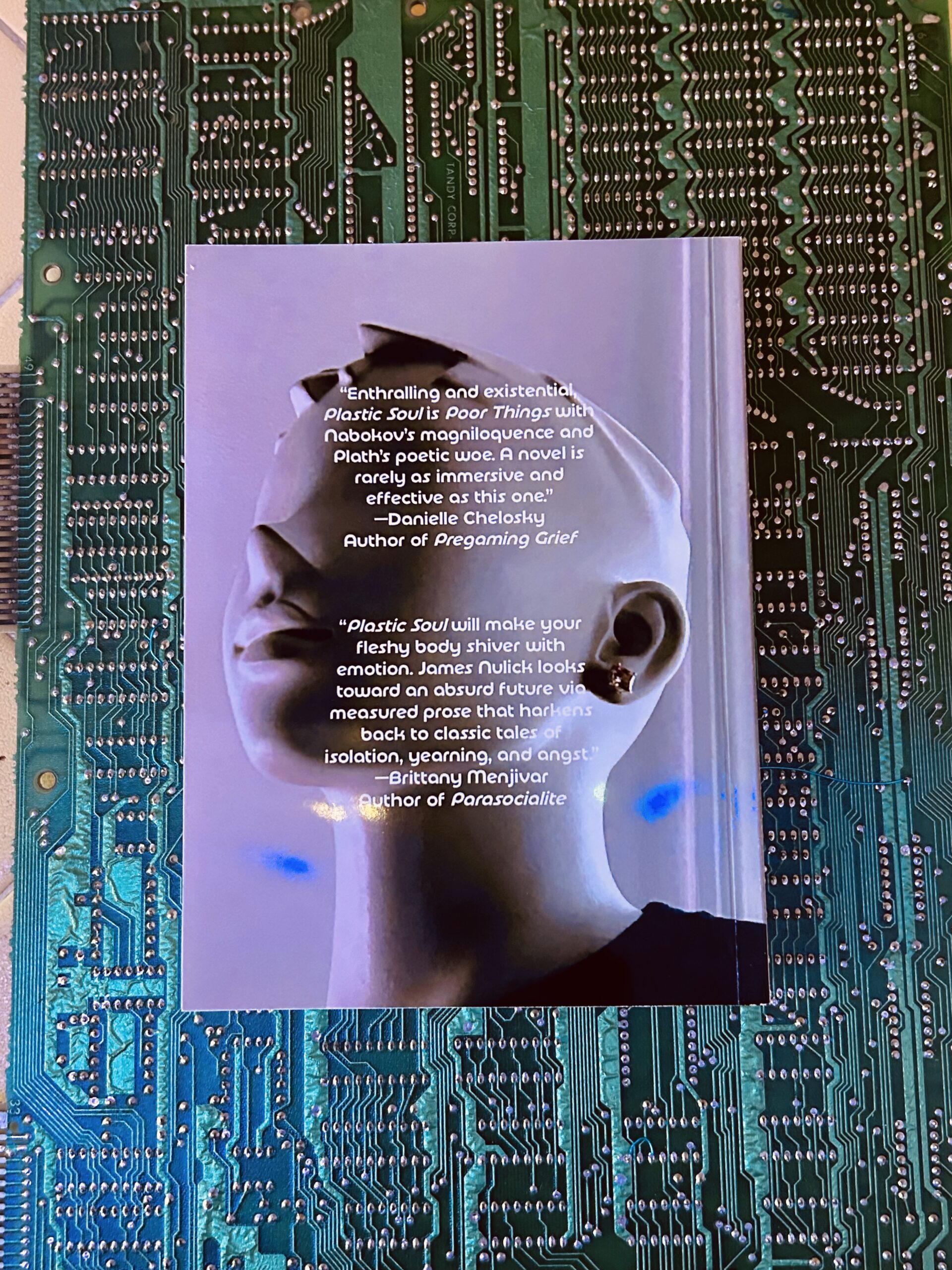
*
p.s. Hey. This weekend the blog goes into welcome mat mode on behalf of the new book by James Nulick, writer’s writer (at least amongst many of the writers I know and respect) and a longtime if more recently MIA commenter/contributor to this very blog. Not to mention being a book from the very admirable, renegade publishing venture Publication Studio. Please delegate some of your time over the next 48 hours to see what the book is all about and possibly spring for it, if you’re convinced. Thanks, and big thank you to Publication Studio and Mr. Nulick himself. ** Misanthrope, Maybe you can read both of them at the same time and blow your brain’s fuses. Monday being both Martin Luther King, Jr.’s birthday and the day that hell’s ugliest American minion accepts the throne is proof that coincidence is random and meaningless. Enjoy, haha. ** jay, Hi. Oh, did I put that ‘Jurassic’ movie on my mid-year faves list? Strange. I mean it’s fun and all, but nothing more than that. I’d watch the last ‘Planet of the Apes’ movie, which made my full year list, first if you want to sink into a recent blockbuster. ‘Inland Empire’ is my favorite Lynch, as I suspect I already said. Yeah, his influence is massive. Someone somewhere wrote that what other director has an adjective named after him wherein everybody knows what Lynchian means. Micro/macro porn animation looks really ridiculous and way not sexy (well, unless you’re so into it that silly representations are enough), no surprise. Thanks for the successful third link attempt. It was worth it, yes! Have a great weekend, man. ** _Black_Acrylic, She has the craziest mouth ever. ** PL, You’ll get accustomed to it, you will. It’ll never quite be water off your back, but it won’t hurt much. In our case, yes, we have to get permission for all the music in our films and usually pay for the use. If it’s a copy to the degree that it’s more an homage than a copy, you can probably get away with it. Especially for a short film, yeah. I think it’s also a matter of the length of the music. I know in the US if you sample a track and the sample is under a certain short length, it’s usually okay. Hence all the Rap borrowings. I’m pretty okay with piracy. There are boots of most of my books out there and torrents of Zac’s and my films, and I’m just happy that people can access the work. My favorite Lynch? ‘Inland Empire’. My favorite film in general? Bresson’s ‘The Devil, Probably’ with Hollis Frampton ‘Straits of Magellan’ a close second. ** Dominik, Hi!!! Yeah, very sad, a huge loss. Urgh. Oh, that’s cool: another love from ‘Twin Peaks’. How about one more … ‘I reject absolutely revenge, aggression, and retaliation. The foundation of such a method… is love. I love you Sheriff Truman,’ G. ** Steeqhen, Hi. It’s weird how when someone dies their importance and influence on you comes to you in a rush and how while they were alive it was just understood, with no need for recognition, a given. ’90s dreampop and trad Irish’: curious. If you get your parents to sit all the way through ‘Inland Empire’ with you, they are stellar parents. But I think I remember you saying yours are. ** alex, Hi, alex! Lovely to see you albeit on such a sad occasion. Congratulions to you (and them) about The Vermin inclusion. Awesome! Online as in can-be-read online, or is it an order-only thing? Everyone, Mega-talented alex has a story, which he intriguingly describes as ‘a kinda mutation of Cindy Lee’s 2020 album Cat o’ Nine Tails’, in the new issue of the exciting magazine The Vermin, and you can get yourself a copy here. That party sounds pretty much like a blast naturally. The back of the knee is such an underrated spot on the body. My weekend is pretty utilitarian. I have to gather materials and documents for a visa I’m applying for, and I have to start making queries re: a sales agent for Zac’s and my new film. Mostly that. Hopefully finishing my current video game. I hope the tattoo is sneaky and beautiful. ** Bill, Yeah, the Dern Day was a total coincidence. I almost pulled it, but then I thought, what better time, etc. I hope your weekend is well-balanced between fruitful input and output. ** Steve, Oh, right, I read her ‘TP’ book back in the day, and I do reminder it being surprisingly good. No, is the Melissa Anderson book worth a read? I’ll turn around ask you if you’ve seen that documentary film about Lynch’s relationship to ‘The Wizard of Oz’? I think it’s called ‘Lynch/Oz’ or something? I’m wondering about it. ‘The Stepford Wives’! Has it been restored or something? I just have a bunch of grunt work this weekend as I just explained to alex. Anything else will be gravy. Stay warm. ** James, Dude, you need to watch more Lynch. You haven’t even seen ‘Twin Peaks’? Anyway, a mere suggestion. Happy weekend to you too, non-nicknamed one. I like the sound of your day, even the ‘inappropriate’ Sade intrusion into their presumably vanilla consciousnesses. Fiction is ultimately a far greater world than that which has been placed before us in 3D and all smelly and consequential. And that includes daydreaming. All books I really like are also drugs. If a book doesn’t trip me out, it hasn’t done its job. ‘Gold Star for Robot Boy’ Oops, sorry about the loading problem. Thank goodness for Facebook, I guess. Twelfth Night at Stratford-upon-Avon sounds mighty impressive at least from the perspective of one to whom the words Stratford-upon-Avon signify quality for some reason. Have fun. ** Tyler Ookami, Haha, so true! And agreed, agreed. ** HaRpEr, Rimbaud always had the right idea. Well, except maybe when he quit writing, but maybe he was prescient even then. So true, that monologue. Thank you for rebuilding it in my imagination. Completely agree about Burroughs/Cronenberg. The only Cronenbergs I like more than just a little are ‘Videodrome’ and ‘Dead Ringers’. Agreed too about good films based on great books requiring a serious deep reinvention of the material and how it works. But I still think why. Why adapt when you can invent from scratch. Why not just leave the book alone? It doesn’t need you, filmmaker. Use your own ideas. Etc. ** Dan Carroll, Hey, Dan. Very nice report/read on ‘Blue Velvet’ and her otherwise. Err, actually, no, I don’t like Cy Twombly’s work. I respect your love for him, and so many smart people’s love for him, so I’ll leave it at that. What is the art studio collective thing? What would your involvement be? Sounds interesting in theory and, yes, potentially really useful and inspiring. When will you hear back? Great luck with that, if you need extra luck. ** Right. You people and James Nulick have a hot date this weekend, so do make the best of it, whatever that means. See you on Monday.
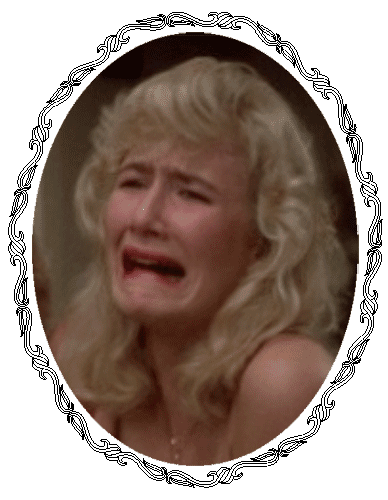
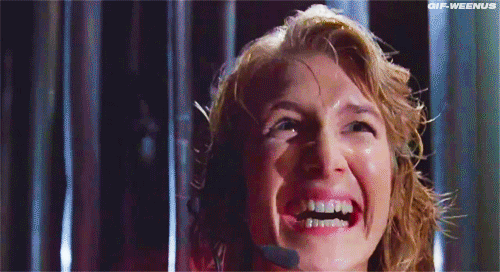



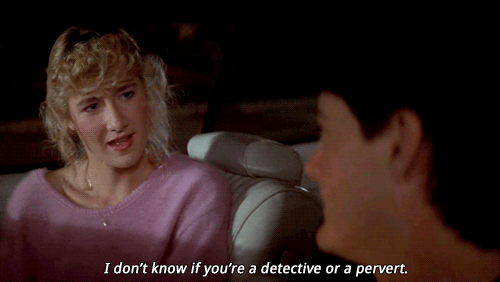

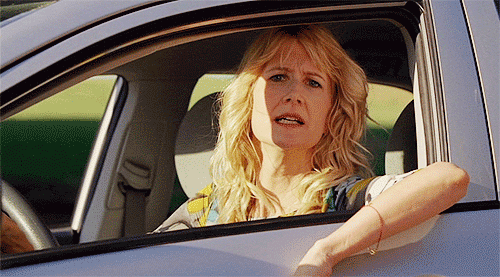






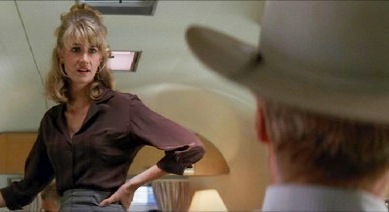

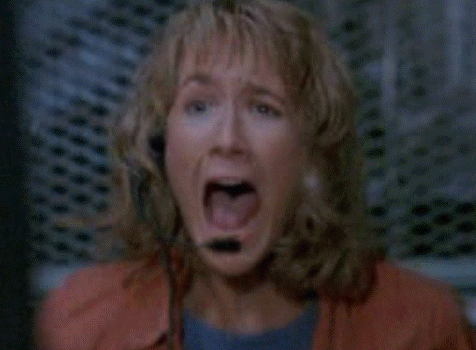

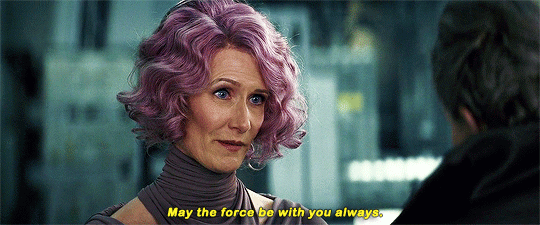

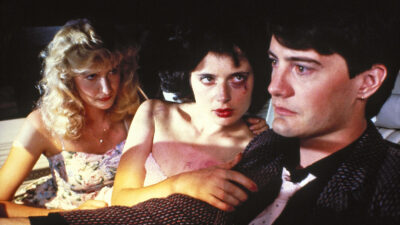


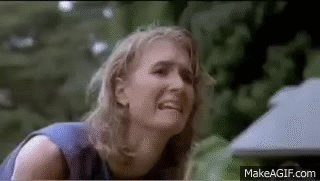

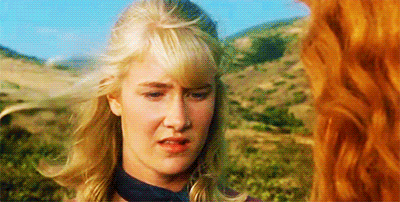
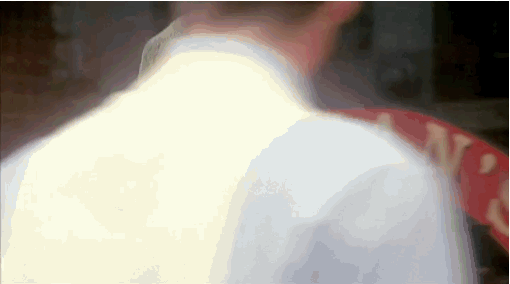
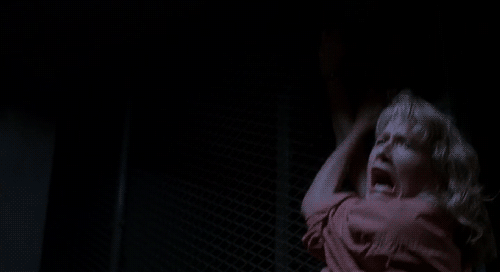

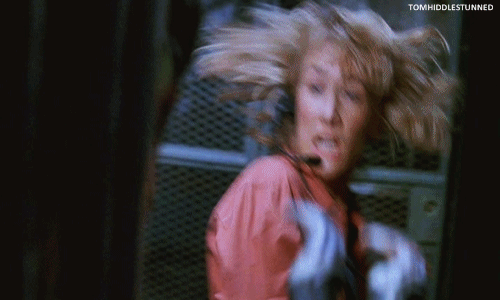
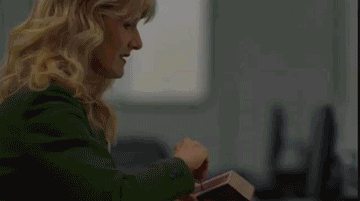
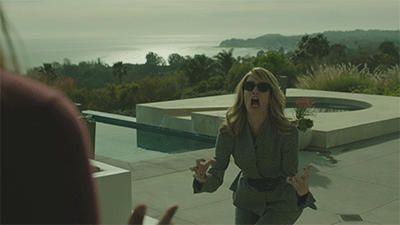
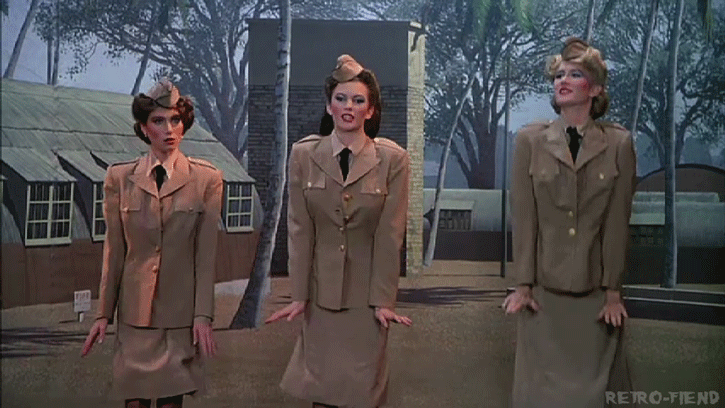
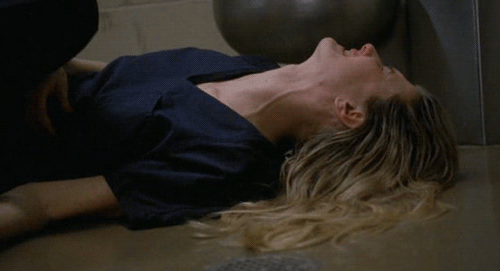


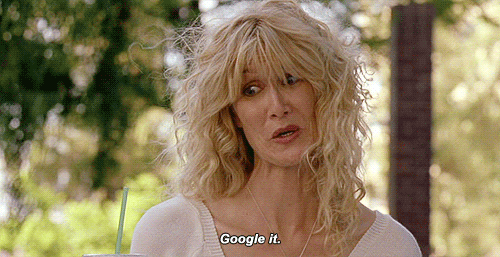




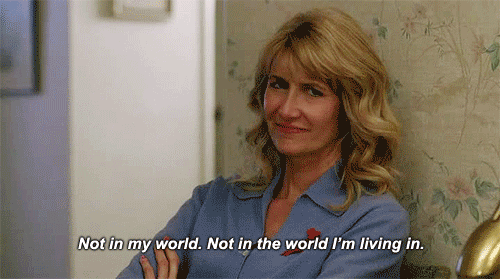
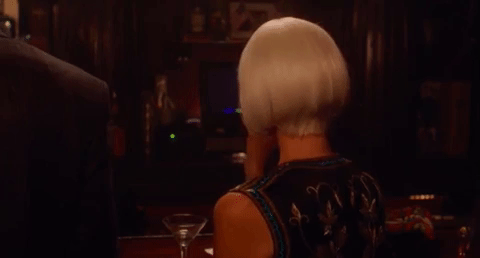
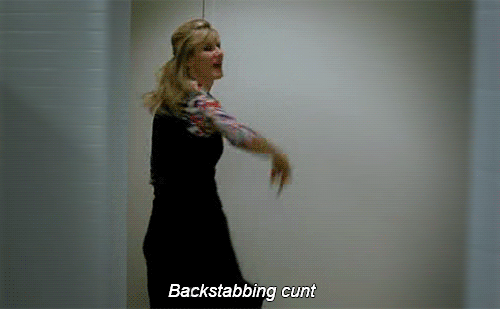



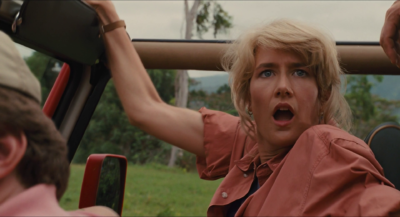
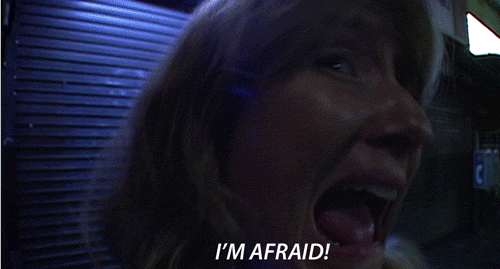
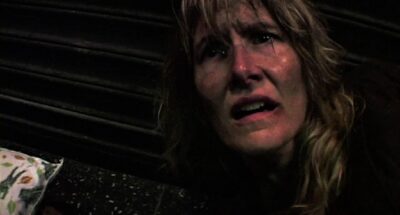
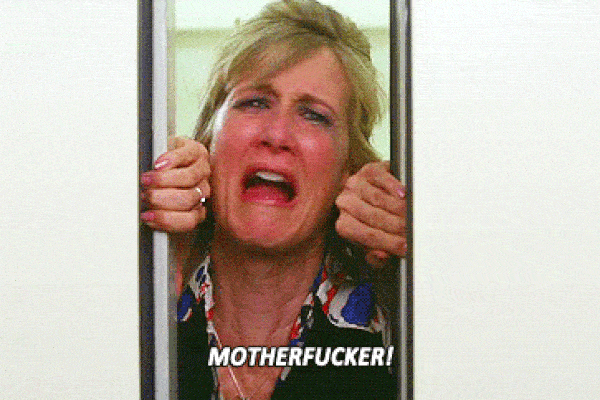

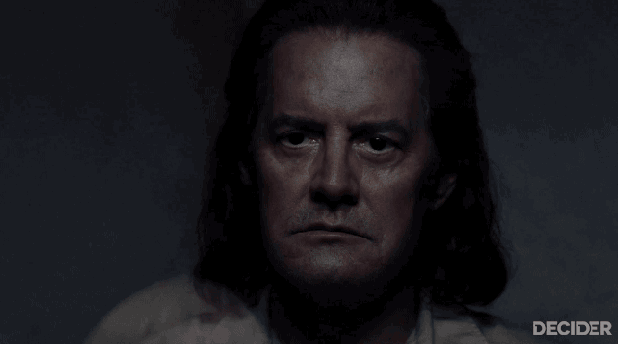
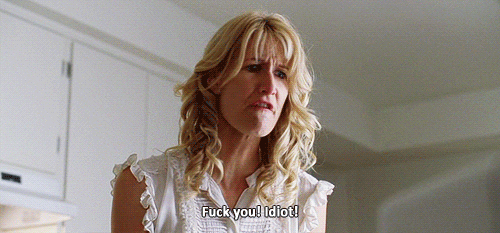
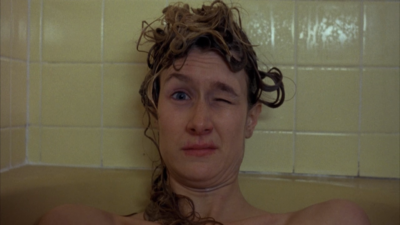


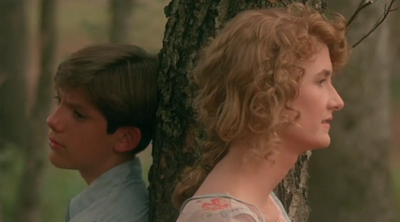




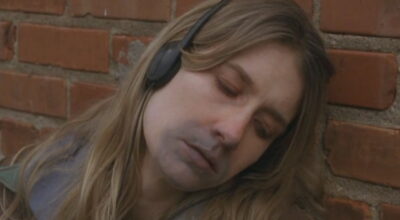

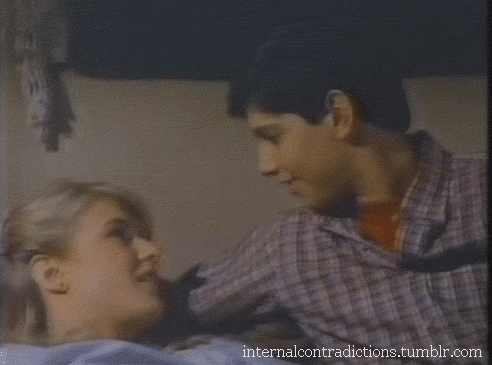
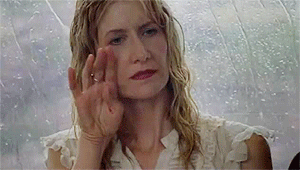
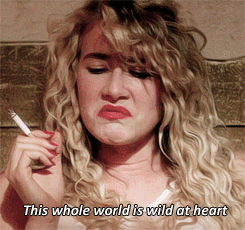
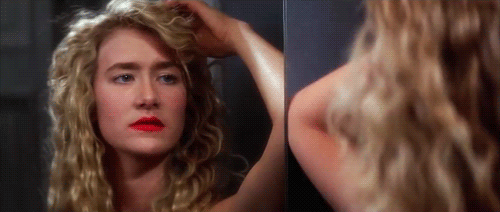
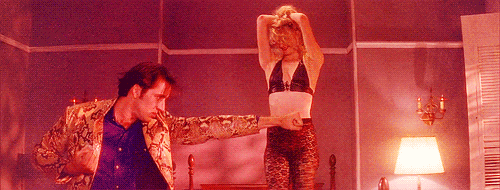
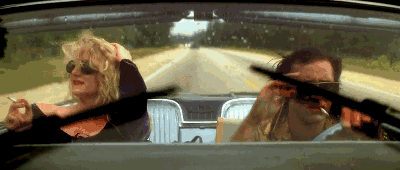
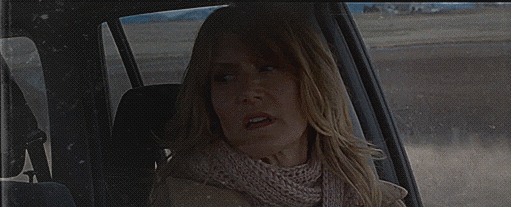
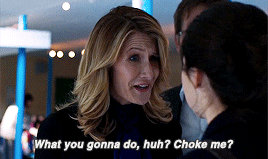
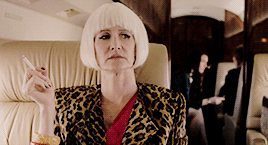
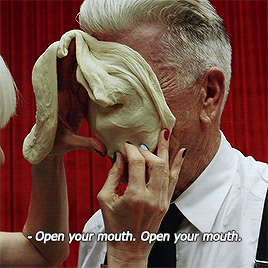

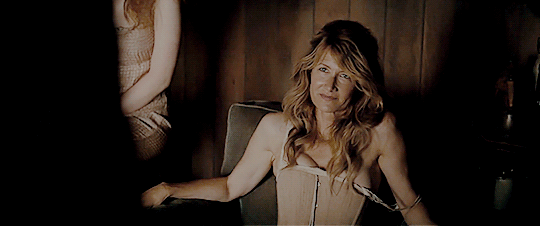




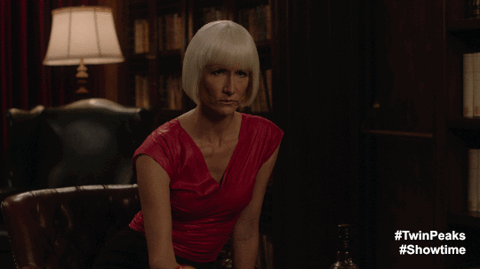
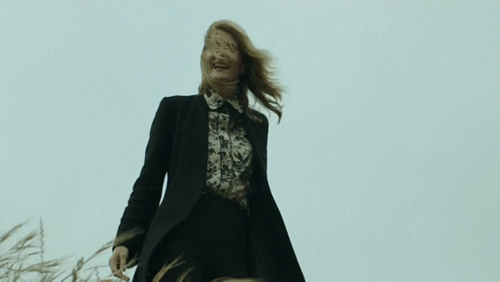
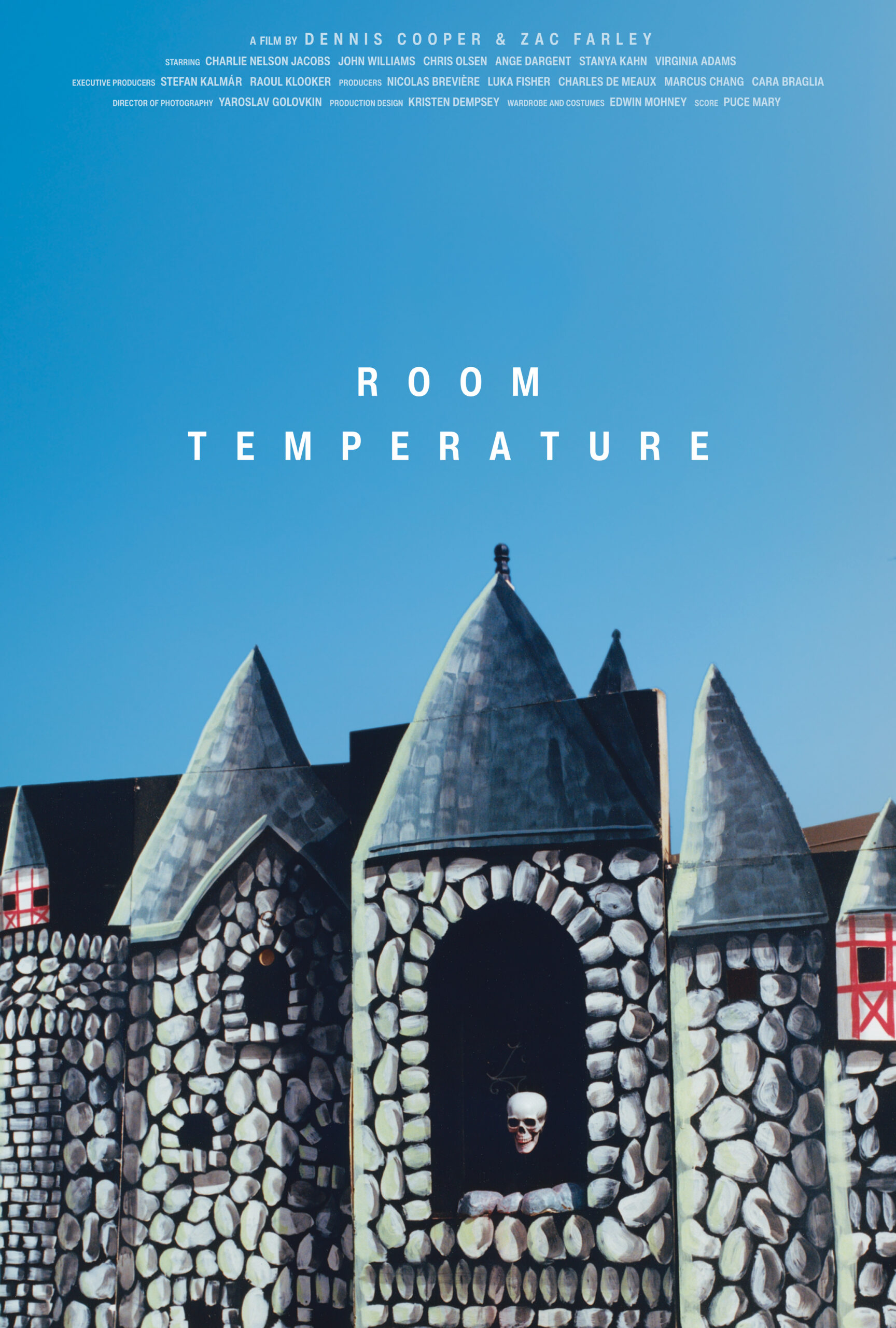



 Now available in North America
Now available in North America 